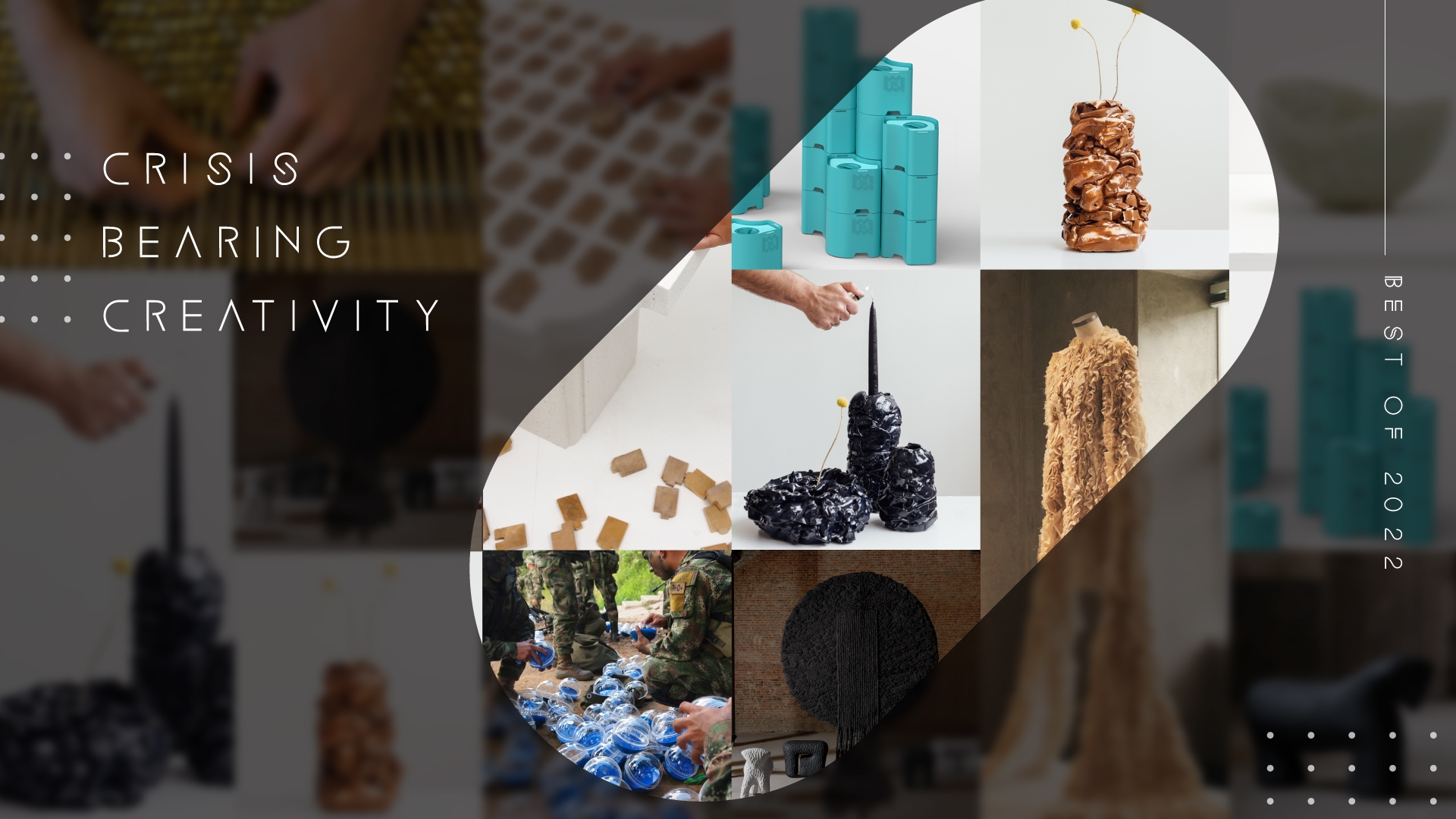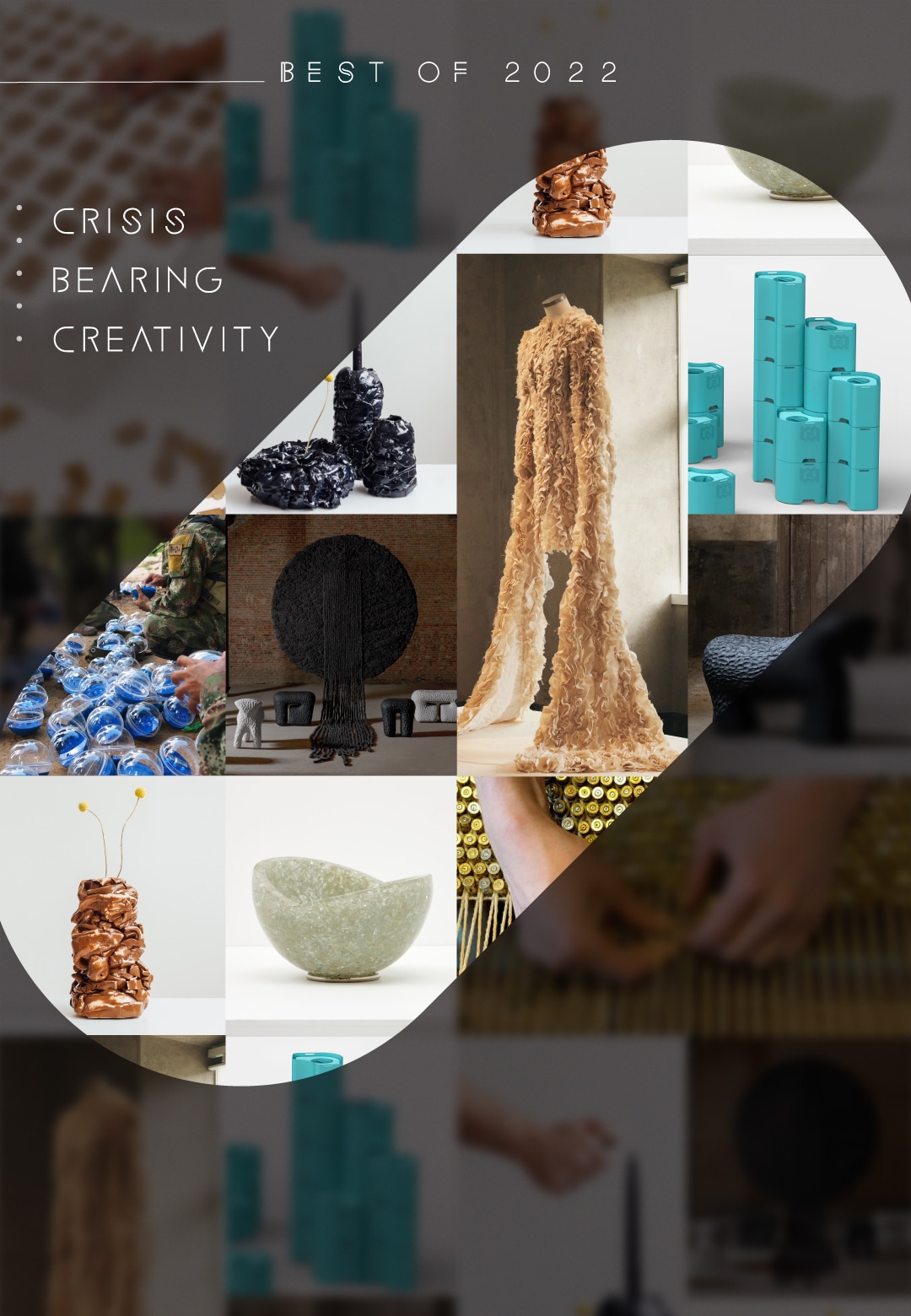Design is not just a conception of creativity or functionality. Often the world succumbs to humanitarian crises and disparities, but design interventions can address them. The world suffered a lot of losses this year, from a tragic pandemic to an economic recession, but even so, it emerged from the ashes stronger and much more advanced than before. This year saw major breakthroughs and design interventions pertaining to global unrests, such as the Russia-Ukraine war, socio-economic disparities, a now receding global pandemic, climate crisis, and hate crimes, all of which harmed the global population directly or indirectly.
STIR focuses on such design interventions that have guided people through various humanitarian crises and creatively highlighted the role of different design leagues in addressing global issues. From Satyendra Pakhalé’s Modular Vaccine Carriers to Nada Debs’ Keeping it Together collection, every design intervention represents a strong symbol of crisis-bearing creativity.
Satyendra Pakhalé’s Modular Vaccine Carriers
Amsterdam-based designer Satyendra Pakhalé’s practice revolves around offering creative and meaningful solutions for healthcare design, industrial design, and architectural demands across the world. The designer recently unveiled a selection of five healthcare and smart design products at the World Design Capital 2022 in an illustrious exhibition titled Design+Health. While the industrial designer's entire body of work is currently the subject of extensive discussion, his Modular Vaccines Carrier (MVC) is a groundbreaking smart product design. Owing to a world that crumbled under the weight of a global pandemic accompanied by noticeable challenges for the healthcare sector, Pakhalé’s design for a vaccine carrier is unique in a way that addresses the problem of logistics and transportation of bulk vaccines to remote locations. The MVC has been developed to easily transport vaccines over larger hauls as part of Pakhale’s ‘Cold Chain Project’ and has been thoroughly researched to sustain through any mode of transport.
Columbia’s Christmas operations orbs
Addressing the long-standing problem of designing for peaceful, healthier and much safer environments, a wonderful display was put up by the Cooper Hewitt Museum in April 2022, that discussed the pros and problems of designing for peace and how industrial and product design can impact the life-affirming and long-term approach towards peace and security across tense borders. Among the 40 odd design interventions that were displayed, were Colombia's Christmas Operations floating orbs as part of their military demobilisation campaign. These little orbs were filled with messages from friends and family that were dispersed across the jungles’ rivers in an effort to persuade rebels to leave their weapons, quit war and retreat. The design of the floating orbs was simple but appropriately profound just as it targeted a design strategy for peace.
Victoria Yakusha’s primitive furniture
Amidst the rising tension between Russia and Ukraine that is currently weaving a spell of grief and anguish across the two nations, it has had an overpowering impact on humanity. While the two nations struggle to settle for peace, a Ukrainian designer and architect Victoria Yakusha brings sculptural design to the table, symbolic of strength and a reminder of how beauty arises from the broken. The collection titled ‘Stepping on Ukrainian Soil’ consists of a series of organically-shaped benches and stools, sculptured using the designer’s signature sustainable material ‘Ztista’ along with a hand-woven, two-metre-long tapestry called ‘Zemlia’ as the philosophic rendition of designing around the earth and ethnic roots. Both the editions that collectively contribute to Yakusha’s collection hold strong remembrance for her motherland and the traditional design practices of Ukraine.
The Vindur dress
While creativity frequently flourishes in the midst of uncertainty, practical considerations and sustainable design techniques also become of paramount importance. Design Museum, Denmark recently hosted an eye-opening exhibition that challenged the normal design norms and practices to cater to the unforeseeable future. The entire exhibition revolved around design interventions that ascertained creative solutions aligned with humanity and sustainability. From a glass sphere that helps one introspect to a lamp designed using leftover cow intestines, the exhibition; Future is Present was varied in all its ordinances and opportunities to create a better future. One such design intervention took the shape of the Vindur dress. Inspired by the wind’s frisky movement, the dress was designed using woven silk and machine-knit milk yarn that can be easily produced using dairy waste. The designers beautifully tapped into an age-old technique of utilising dairy by-products for creating textiles during the inter-war period when resources were scarce and waste was transformed into value. The dress stands as an exemplary example of sustainable material utilisation with minimal resources.
Fango’s ceramic palimpsests
Whenever any part of the world succumbs to a humanitarian crisis shaped as a recession, a war or even a health emergency, the resonating impact of the catastrophes is most often felt all across the globe in the form of economic, and resource or even environmental issues. The formidable crises that are frequently observed as periodic quivers are nothing more than reflective mirrors of all the world's falsehoods, flaws, and faltering. During the COVID-19 pandemic, just as the global economies crumbled, Colombia-based designer Francisco Jaramillo took it upon himself to help out the artisans who were rendered jobless and helpless. The Palimpsesto Collection by Jaramillo’s studio Fango was a result of collective scraps that the Columbian designer bought from the local artisans in an effort to not just help them sustain themselves economically but also simultaneously highlight the power of sustainable design practices. The designer used the impending byproducts of ceramic art to create silhouettes of candle holders and vases that fashioned their perfectly organic and almost imperfect shapes. Re-establishing the sentimental values of the artisanal crafts, the designer plans to extend a profit percentage of the Palimpsesto collections’ sales for the betterment of the artisans.
Keeping it together bowl and table by Nada Debs
On August 4, 2022, a massive explosion in Beirut resulted in the loss of hundreds of lives as well as economic and proprietary assets. The blast that shook the entire world with its sheer intensity left thousands of people homeless. Nada Debs, a Lebanese designer whose studio, too, incurred great losses due to the explosion, recently displayed a few of her furniture design and homeware pieces during the Dubai Design Week 2022 that she created as a response to the Beirut blast. Debs, whose practice often revolves around marrying traditional craftsmanship with technology, designed the ‘Keeping it Together’ bowl and table using the salvaged remnants of furniture pieces from her studio that were destroyed by the blast. The designer used certain creative techniques to put the puzzles in the form of broken pieces together to create a wooden table and a marble bowl, symbolic of hope and affirmation.
MAPS bullet rug design
Designed by a creative design studio DETEXT, the MAPS bullet rug design is a unique intervention that identifies and emphasises confronting world problems and conflicts without creating damage. The rug is beautifully designed by collectively weaving bullet casings that were collected from different parts of the world including Colombia, Guatemala, Mexico, Spain, United States and Lebanon. It is indeed a wonderful experiment that confronts creativity in the face of warfare. The rug was presented as part of the exhibition Designing Peace at the Cooper Hewitt Museum earlier this year. Each bullet case has a story to tell that is not only a reflection of the geopolitical situations in which it was obtained but also of the economics and culture of arms and ammunition around the world.
Maryam Turkey’s ‘In Between Rise and Fall’ collection
While the world boasts of cultural diversities, there are also many economic, sociological, infrastructural, and cultural disparities. The Iraqi-American designer Maryam Turkey designed a breathtaking collection titled ‘Between Rise and Fall’ that carried the essence of living through the changing cityscapes of New York and Baghdad. Her functional artworks are evocative of her experiences in two metropolises that shaped her life. Her installation, with partially illuminated and partially dark surfaces, reflects the never-ending cycle of constructing, destroying, and rebuilding.






 Sign in with email
Sign in with email










What do you think?